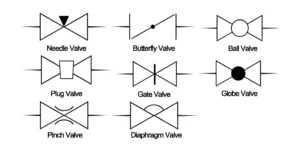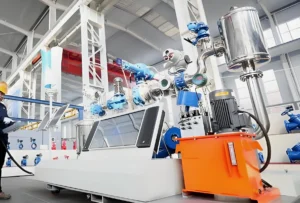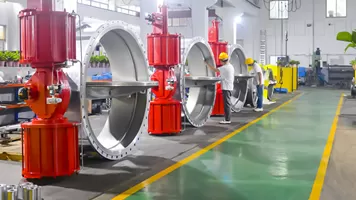In the wake of the Industrial Revolution, innovations in valve technology have not only propelled the rapid development of the industry, but also become a crucial force in shaping the future landscape of industry. As technology advances by leaps and bounds, valves have evolved from mere opening and closing tools into efficient, safe, and intelligent fluid control centers. This article delves into the latest breakthroughs in valve technology and their profound implications for the future of industry.
Innovations in Valve Technology: Guiding the Future of Industry
I. Smart Valves: The Future of Automation and Remote Control
The emergence of smart valve technology signifies the entry of the valve industry into a new era of intelligence. These valves integrate advanced sensors, actuators, and control systems, enabling real-time monitoring of key fluid parameters like pressure, temperature, and flow rate, and achieving precise adjustments based on preset conditions. Additionally, smart valves possess remote monitoring and control capabilities, significantly enhancing the convenience of equipment maintenance and system security.
II. Energy-Efficient Valves: Innovations to Address Energy Challenges
Amidst global energy scarcity and increasing environmental awareness, energy-efficient valve technology has emerged. These valves utilize low-friction materials and optimized flow path designs to effectively reduce energy losses during fluid flow, enhancing the overall energy efficiency of the system. The widespread application of energy-efficient valves not only saves significant energy costs for enterprises but also contributes to global energy sustainability.
III. High-Performance Materials: Durability Beyond Limits
As industrial environments become increasingly complex and harsh, valves are required to withstand higher temperatures, pressures, and corrosion. The application of high-performance materials has become a significant direction in valve technology innovation. New materials like titanium alloys and super duplex stainless steel are widely used in valve manufacturing, significantly enhancing valves’ durability, corrosion resistance, and reliability. These high-performance valves can meet the stable operation requirements under various extreme conditions, providing robust support for smooth industrial production.
IV. Digitization and the Internet of Things: Ushering in a New Era of Intelligent Manufacturing
The integration of digitization and the Internet of Things (IoT) has revolutionized valve technology. By connecting valves to the internet, enterprises can achieve real-time monitoring and data analysis of the entire production process. This intelligent management system can accurately predict equipment failure risks, enabling predictive maintenance, improving equipment lifespan and safety. Simultaneously, digitization optimizes production processes, enhancing efficiency and reducing costs.
Conclusion
Innovations in valve technology are steering industry towards a future of greater efficiency, intelligence, and environmental sustainability. From smart valves to energy-efficient designs, to the application of high-performance materials, and the integration of digitization and IoT, each innovation provides more reliable and efficient solutions for industrial production. As technology continues to progress and market conditions evolve, we have reason to believe that valve technology will play an increasingly significant role in ensuring industrial safety and promoting sustainable development.








